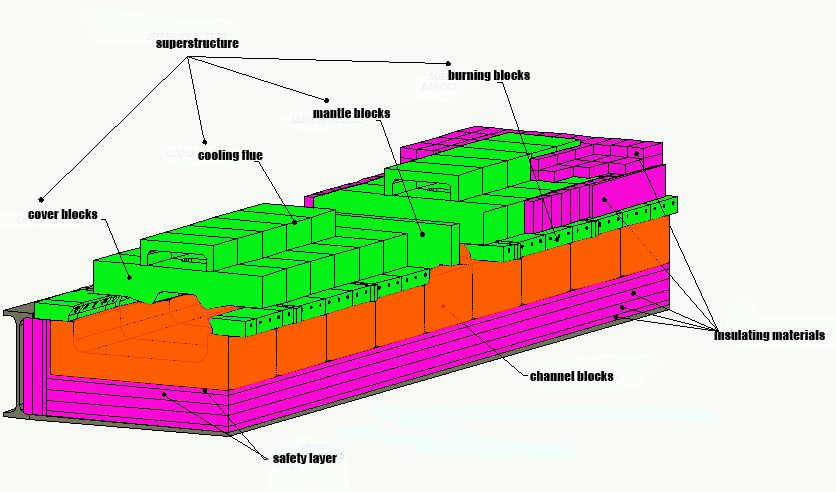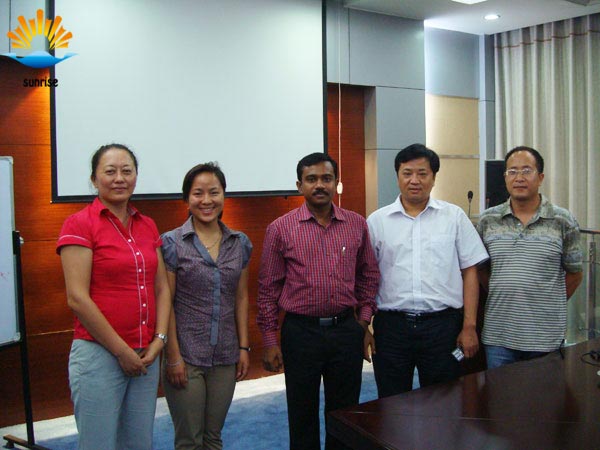
Product List
Success Case
Contact Us
- 0086 371 63838939
- 0086 371 63835539
- sales@sunriserefr.com
- tkfanyi
- No.36 Fengchan Road, Zhengzhou City

News
Forehearth Types And Refractory Selection for The Glass Furnace
- More related products
- Fused Cast AZS
- Fused Cast Alumina Block
- Fused Cast High Zirconia Block
- Fused Cast Skid Rail Block
Similar to the work end of the glass furnace, forehearths are used to cool the molten glass in order to bring it to the maximum thermal homogeneity. When selecting refractories for forehearths, the properties that refractories must have should be taken into account in order to face the operating factors.
In the forehearth, high temperature molten glass from the melting zone is cooled uniformly to acquire homogeneous glass liquid and then is delivered to the forming zone. There are two types of forehearths used in the glass furnace: standard forehearths and colorant forehearths.

Standard forehearth
The standard forehearth is mainly made up of two parts: channels and superstructures. Since the two parts are subjected to different operating environment, they must be separately treated.
Channels work at constant temperature, so the thermal and chemical factors are the main factors to consider. The temperature is the first factor to consider when selecting refractories. The glass corrosion is related to the temperature and this is why it is necessary to consider the temperature limit of the refractories. When glass is in contact with any refractory material at high temperature, the chemical reaction is a dissolution process. To increase the glass corrosion resistance, channels must obviously have the right porosity and density, but the crystal structure and in particular the glassy phase content is the most important factor. The glassy phase content must be as low as possible because it is a weak point in a refractory material.
So refractories in contact with glass must have a crystalline structure and a very low glassy phase for better glass corrosion resistance. Low glassy phase zircon mullite brick and high alumina brick are recommended. Zircon mullite bricks have better resistance to glass corrosion than high alumina bricks due to their particular crystal structure. When high alumina bricks are used, the temperature must not exceed 1270℃, while the operating temperature of zircon mullite bricks should be limited to 1320 - 1330℃. If the operating temperature exceeds the limits mentioned above, fused cast AZS can be used.
The operating factors of the superstructures are the temperature, vapor attack and compression in hot condition. Refractories with very low glassy phase have high vapor corrosion resistance. The superstructure is subjected to strong compression at high temperature and thus they must have high creep values. Creep is influenced by the content of low melting agents, which form the glassy phase.
The suitable refractories for the superstructure must have a low glassy phase content to resist both to vapor attack and to creep. Low glassy phase sillimanite brick is recommended.
Colorant forehearths
Different from the standard forehearths, colorant forehearths have a mixing area where the glass is colored. The operating factors in this area, both for channels and for superstructure, are much more severe compared to the standard forehearths.
At the beginning of the mixing area, frit is fed to the glass for coloring it. This area is heated to increase the temperature to support the mixing. Many stirrers are installed to mix together glass and frit, which causes the severe flow conditions of the glass. High temperature and stirrers also cause severe corrosion on the superstructure due to the production of very aggressive vapor.
Fused cast AZS block is usually used in the mixing area channels and low grassy phase zircon mullite brick is recommended for the superstructure. The refractories used in other areas of the colorant forehearth is the same to those of the standard forehearths. Low glassy phase zircon mullite, high alumina and sillimanite bricks are used. Stirrers is subjected to thermal shock, high temperature and glass corrosion, thus the refractory should have a low glassy phase and good resistance to thermal shock and glass corrosion. Low glassy phase zirconia mullite brick is recommended.
Zhengzhou Sunrise is a refractory material supplier from China, offering high quality refractory materials for glass furnaces, including fused cast AZS block, fused cast alumina block, fused cast high zirconia block, mullite brick, zircon brick, alumina bubble brick, magnesia brick, sillimanite brick, corundum brick, low porosity fireclay brick, high alumina brick, all kinds of glass furnace ramming masses, etc..
- Read more
- The Application Of Fused Cast AZS Block In The Sidewall Of Glass Furnaces
- Refractory Selection for Oxy-Fuel Glass Furnaces
- How To Prolong The Service Life Of Glass Furnace
- Refractory Selection And Repair Of The Glass Furnace Bottom
- Improvement And Refractory Selection of The Glass Furnace Crown
Leave Message
For more information on any of our products please get in touch using the form below. One of our sales team will respond to your enquiry as soon as possible.

Copyright © 2014 Zhengzhou Sunrise Refractory Co., Ltd. 豫ICP备13002126号












